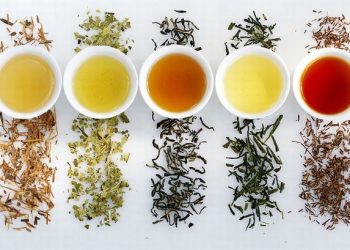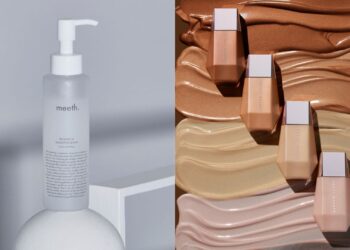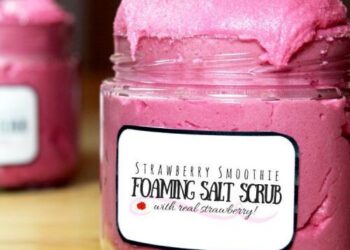
Applying foundation can be a little tricky if you’re unsure of the right brushes or tools to be used and if you’re unclear about the different foundations available in the market. Some of the ones that are most commonly available are cream foundations, liquid foundations and powder foundations. While all them give you a flawless complexion and cover up imperfections, their formulations, consistency and finish varies. Hence, for each of these foundations, we’ll be dishing on what kind of tools you can use and the different ways of application you can try out. Before you apply any sort of foundation, make sure your skin is properly moisturised!

1. Cream Foundation
These are usually medium to full coverage and they will give a velvety look to your complexion. It’s thick in consistency and requires a little more blending for an even coverage. Cream foundations are also known to to have good hydrating properties and if you have normal to dry skin, this would be perfect for you. Cream foundations are the way to go if you’re into concealing every flaw on your face.

To apply cream foundations, the best way would be to use a beauty sponge or buffing brush. The key to applying cream foundation is ultimately to use a dabbing or buffing motion. You can dab the product right onto your skin, then slowly take your time to ensure that it’s spread out smoothly. If your foundation is of a cream-to-powder formulation, you wouldn’t need to set it with powder.

2. Liquid Foundation
Liquid foundations give you light to medium coverage and it can vary from a slightly runny to a more sauce-like consistency. These usually come in a glass bottle with a screw top or pump for convenience and we reckon that liquid foundations give the most flawless and natural finish without looking too heavy or cakey. Some liquid foundations also give off a very dewy look, which is nice if you’re looking to look brighter and more awake. What’s best about liquid foundations is that they’re suitable for every skin type, depending on its formulation.

To apply, you can use a beauty sponge, stippling brush, foundation paddle brush or a buffing brush. For a lighter coverage, use the beauty sponge or stippling brush, and if you want a more heavy coverage, use the paddle brush or buffing brush. You can also always build up the product and go over areas where you need slightly more coverage.
With liquid foundations, it’s best if you warm up the product before application. So, pour some product out on the back of your palm and this will somewhat loosen and even out the formulation. Then, dip the brush onto the product and slowly work it into your skin. After that, set everything with a dusting of finishing powder.

3. Powder Foundation
If you’re just starting out with makeup, you can try using a powder foundation first. Compared to the two foundations above, powder foundations are more lightweight, offer a lighter coverage and they usually come in a compact or in loose powder form. If you have sensitive skin, you can always opt for a mineral powder foundation as these powders are safe, natural and organic. Besides using it as foundation, powder foundations can also be used to set your liquid foundation. However, you have to be very careful with this to avoid looking cakey or powdery. Powder foundation is best suited for people with acne prone, oily and combination skin.

The only way you should be going about your powder foundation is by buffing the product into the skin so we recommend getting a good buffing brush for this. Dip your brush into the product and swirl it onto the different areas of your skin to get a flawless finish. Some powder foundations look better on the skin after a certain period of time, so just let it settle and do its magic!









